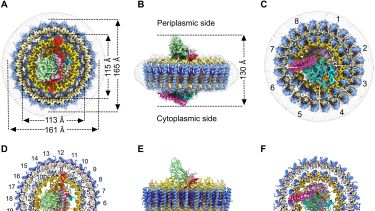Eight years ago an unusual bacterium was discovered in Lake Tian E Hu (Swan lake) in the Gobi desert. The new organism belongs to a rare bacterial genus called Gemmatimonas, and it contained bacteriochlorophyll, a pigment related to chlorophylls found in plants.
Analysis of its genome by a collaboration of scientists involving the Sheffield Photosynthesis Group led by Professor Neil Hunter suggested that this novel bacterium conducts an ancient form of photosynthesis.
This structural and functional study has exciting implications because it shows that G. phototrophica has independently evolved its own compact, robust, and highly effective architecture for harvesting and trapping solar energy
Dr Pu Qian
Materials and Structural Analysis, Thermo-Fisher Scientific, University of Sheffield.
In their paper recently published in Science Advances, the team show how this enigmatic organism harvests light energy. They explain how they used electron cryomicroscopy collected in four different labs. Initially, at Basel University, with which they got a projection map of the complex. Data was then collected at eBIC (the electron Bio-Imaging Centre) at Diamond, from which a 3.4 Å resolution structure was obtained. Further data collection was done at the CEITECH in the Czech Republic. Combining the two datasets produced a 3.2 Å model and a final data collection performed at Thermo Fisher Scientific resulted in the 2.4 Å resolution structure.
Their work revealed the detailed structure of the photosynthesis complex, which comprises 178 pigments bound to more than 80 protein subunits. The light harvesting subunits are arranged in two concentric rings around the reaction centre which converts the absorbed light energy into an electrical charge.
Since the pigments in the outer ring have higher energy than the pigments in the centre of the ring the whole arrangement serves as a funnel. The energy absorbed by the pigments at the periphery of the complex is transferred within several picoseconds down the energy gradient to the centre of the complex where it is transformed into metabolic energy.


